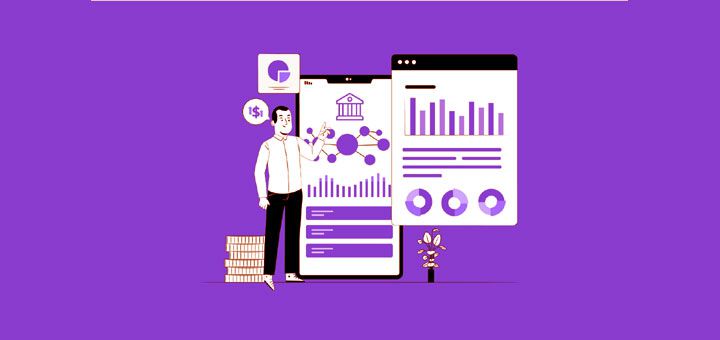
The job market across global tech and consulting firms has entered a turbulent phase again.
From Amazon and Accenture to TCS, Wipro, and IBM, thousands of employees have been asked to leave this year.
The cause isn’t a sudden crisis — it’s a deliberate reshaping of how companies want to function in the age of automation.
Amazon’s Layoffs: People Operations Take the Hit
Amazon’s latest layoff plan targets its People Experience and Technology (PXT) team — the human resources backbone of the company. Around 15% of HR staff could lose their jobs as Amazon restructures the department.
The company is pushing for leaner operations, where AI systems handle much of the hiring, data management, and employee query resolution that HR professionals once did.
With over 10,000 HR employees globally, this marks one of Amazon’s most significant internal reorganizations since the pandemic.
Insiders say the company is reallocating resources toward AI infrastructure and robotics, betting that technology can manage workforce operations more efficiently.
Accenture’s Expensive Reinvention
Accenture has let go of more than 11,000 employees in a single quarter, spending roughly USD 615 million in severance payments.
The company calls it “business optimization,” but CEO Julie Sweet offered a blunt explanation:
“We are exiting employees we can’t retrain for the skills we need.”
This sentence captures what’s happening across the corporate world — a quiet divide between those who can reskill for the AI era and those who can’t.
Accenture has already trained 550,000+ employees in generative AI, doubled its AI and data team to 77,000, and launched a new division — Reinvention Services — focused on digital transformation.
The layoffs, though large, are part of a long-term pivot. Accenture is trimming outdated roles while hiring aggressively in cloud, analytics, and automation.
TCS, Wipro, and India’s IT Sector Rebalance
India’s IT sector is feeling the aftershocks too.
Tata Consultancy Services (TCS) has quietly reduced nearly 12,000 positions — roughly 2% of its workforce — while Wipro has seen over 24,000 exits in the past year.
These aren’t mass firings; they’re structural recalibrations.
TCS and Wipro are reorganizing around digital consulting, AI-driven services, and cloud transformation — areas with higher margins and client demand.
What’s changing is the talent mix: traditional coding and maintenance roles are fading, while AI engineers, prompt specialists, and data architects are in demand.
AI: The Silent Force Behind Workforce Shifts
Artificial intelligence has turned from a buzzword into a budget driver.
From HR automation to code writing, AI is transforming how companies operate — and whom they employ.
For example:
- Chatbots and virtual assistants now handle HR and payroll queries.
- Automated testing tools are replacing manual QA jobs.
- Generative AI helps write, debug, and optimise code faster than ever.
Companies are not reducing headcount to shrink, but to rebuild smarter.
Layoffs free up funds that get redirected toward new AI tools, cloud infrastructure, and training for high-skill roles.
It’s Not Just About Cost — It’s About Clarity
These layoffs reflect a broader corporate realignment.
Accenture is divesting acquisitions that no longer fit its new direction. Amazon is merging overlapping teams.
In each case, the goal is the same — cut complexity, focus on agility.
Public companies are under constant pressure to improve profitability, and a leaner structure allows them to innovate faster.
To investors, “business optimization” sounds cleaner than “job cuts,” but the result is the same: a smaller, sharper workforce built for the AI age.
The Human Side of Layoffs
Behind the press releases and investor calls, there’s a quieter story — the personal cost of disruption.
For many, these layoffs arrived without warning. Months of dedication can suddenly end with an email and a severance package.
This emotional fallout doesn’t make headlines, but it affects productivity and trust in the long run.
Employees now operate in constant uncertainty, unsure if the next quarter’s “restructuring” will include their role.
The once-glamorous image of tech and consulting jobs is starting to feel fragile, especially for mid-career professionals whose skills predate the AI wave.
Lessons for Professionals
The safest career path today is not a title — it’s adaptability.
Employees who keep learning new skills, especially in AI, data analysis, and automation, are becoming indispensable.
Here’s how to stay relevant:
- Learn AI-assisted tools related to your domain.
- Take online certifications in data analytics, cloud platforms, or cybersecurity.
- Embrace cross-functional skills — tech plus business understanding is powerful.
In a job market where machines are doing more, contextual human thinking — judgment, empathy, creativity — becomes the differentiator.
Lessons for Companies
The challenge for companies is balance.
Cut too deep, and they risk losing institutional knowledge.
Hold back, and they risk lagging behind more agile rivals.
The most resilient firms will blend automation with human insight — using AI to assist, not replace, their workforce.
This approach keeps morale stable while delivering efficiency.
FAQs: Understanding the Layoff Wave
1. Why are so many companies laying off employees in 2025?
Most firms are streamlining operations, cutting legacy roles, and investing in artificial intelligence. It’s not just cost-cutting — it’s repositioning for future technology-driven growth.
2. Are Amazon and Accenture done with layoffs?
Not entirely. Both companies have hinted at ongoing restructuring. Amazon’s next round focuses on HR and support functions, while Accenture continues reshaping around AI-led consulting.
3. Will AI create new jobs or replace existing ones?
Both. Routine tasks are being automated, but new roles in data science, AI governance, prompt engineering, and automation design are emerging rapidly.
4. Are Indian IT companies safe from these cuts?
No. Firms like TCS, Wipro, and Infosys are also adjusting their workforce structure. However, India remains a talent hub for digital and AI-related projects, so skilled professionals will continue to find opportunities.
5. What should employees do right now?
Focus on continuous learning. Even short-term upskilling in cloud computing, machine learning, or process automation can make a big difference in employability.
Final Thoughts
The layoff headlines of 2025 are not a story of decline — they’re the sound of transformation.
Technology is rewriting how companies operate, and those who adapt will thrive.
Whether you’re an employee or a business leader, one principle stands firm: evolution is no longer optional. The future belongs to those who move with the change, not against it.






